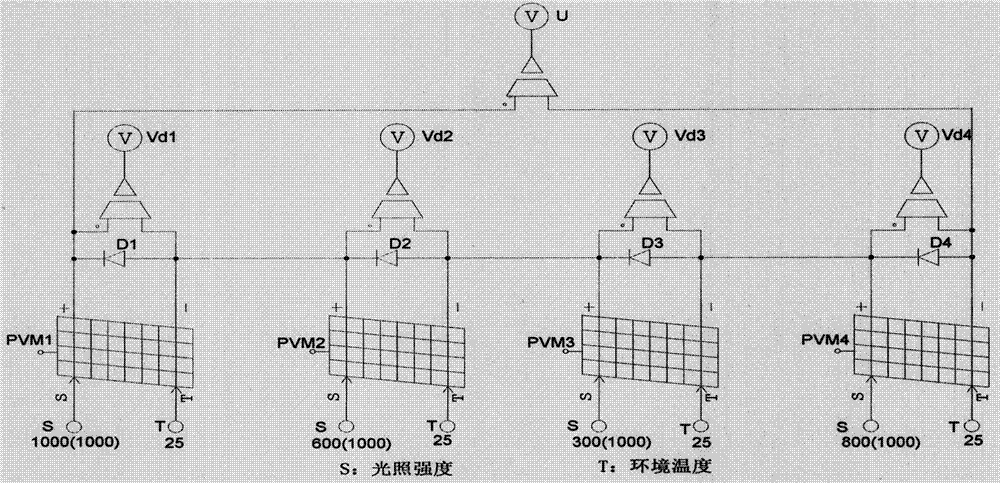A method for maximum power point tracking of photovoltaic modules connected in series
A technology of maximum power point and photovoltaic modules, applied in photovoltaic power generation, instruments, and regulation of electrical variables, etc., can solve problems such as local optimization, loss, MPPT algorithm cannot quickly and accurately find the maximum power point of photovoltaic modules in series
- Summary
- Abstract
- Description
- Claims
- Application Information
AI Technical Summary
Problems solved by technology
Method used
Image
Examples
Embodiment Construction
[0043] The present invention will be further described below in conjunction with the accompanying drawings and embodiments. It should be understood that the embodiments described here are only used to illustrate and explain the present invention, and therefore the content of the specific examples should not limit the protection scope of the present invention.
[0044] figure 1 It is a schematic diagram of four series-connected photovoltaic modules and a voltage sampling circuit under partial shading and no shading. Among them, PVM1-PVM4 are 60W photovoltaic modules, and under standard test conditions, the light intensity is 1000W / m 2 , at a temperature of 25°C, the open-circuit voltage, short-circuit current, voltage and current at the maximum power point are 21.1V, 3.8A, 17.1V and 3.5A, respectively, and D1-D4 are the opposite parallel connections at both ends of the corresponding photovoltaic modules. Bypass diodes, the conduction voltage is 0.7V, Vd1-Vd4 represents the vol...
PUM
 Login to View More
Login to View More Abstract
Description
Claims
Application Information
 Login to View More
Login to View More - R&D
- Intellectual Property
- Life Sciences
- Materials
- Tech Scout
- Unparalleled Data Quality
- Higher Quality Content
- 60% Fewer Hallucinations
Browse by: Latest US Patents, China's latest patents, Technical Efficacy Thesaurus, Application Domain, Technology Topic, Popular Technical Reports.
© 2025 PatSnap. All rights reserved.Legal|Privacy policy|Modern Slavery Act Transparency Statement|Sitemap|About US| Contact US: help@patsnap.com



